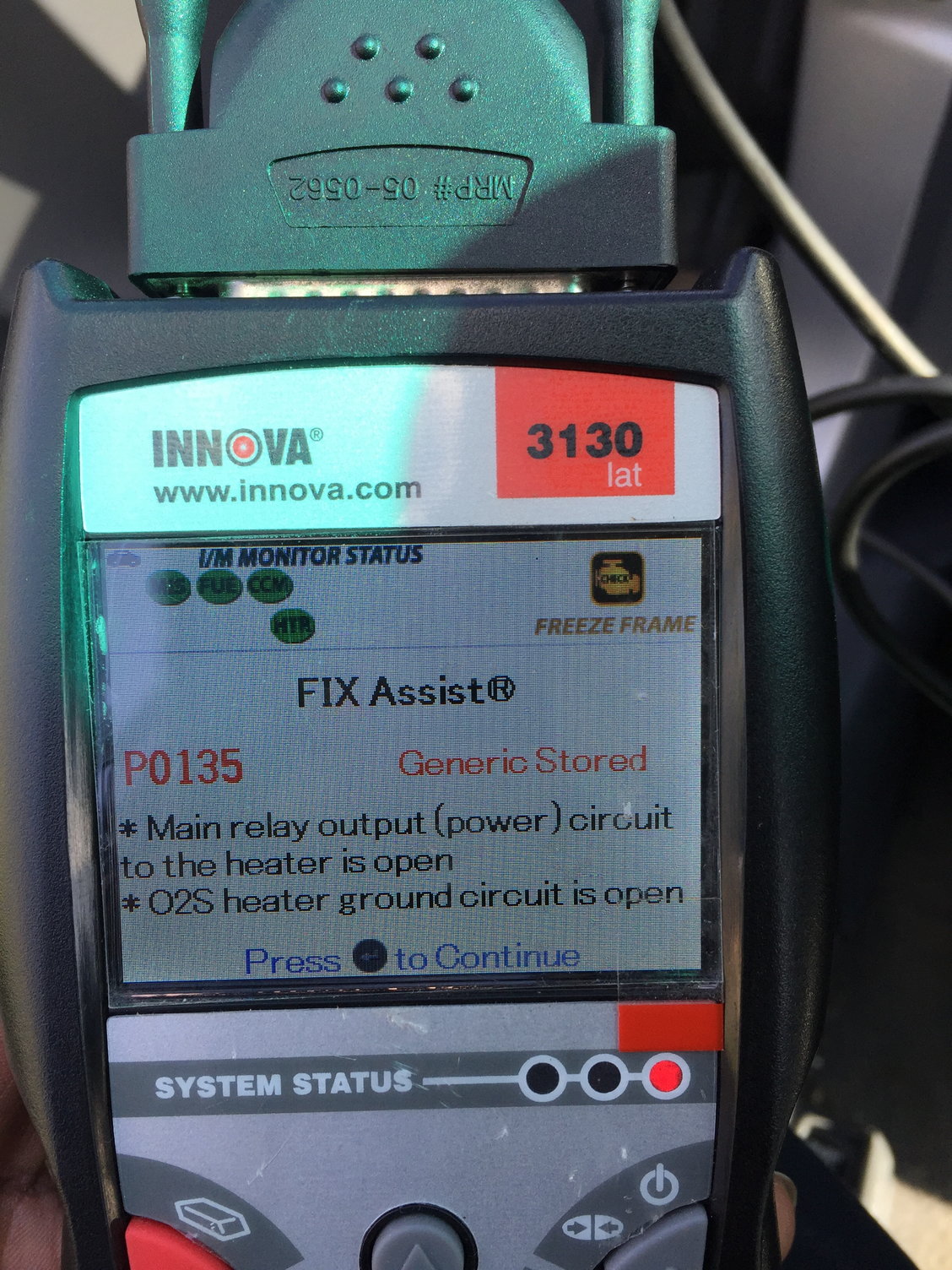An In-depth Exploration into the Causes, Consequences, and Effective Solutions
An open loop fault, a prevalent issue in electronic systems, arises when the control system lacks feedback from the output. This absence of feedback impedes the system’s ability to adjust its output based on the desired outcome, resulting in malfunction or even catastrophic failure if not promptly addressed. To navigate such scenarios effectively, a comprehensive understanding of the fault, its underlying causes, and the most appropriate troubleshooting techniques is essential. In this article, we delve into the world of open loop faults, providing a detailed guide to diagnosis and resolution that will empower readers to confidently overcome these challenges and ensure the smooth operation of their electronic systems.

Image: www.civicforums.com
Unveiling the Causes: Identifying the Culprits Behind Open Loop Faults
Open loop faults can stem from various factors, ranging from faulty sensors to electrical issues and mechanical breakdowns. A thorough understanding of these potential causes is paramount for effective troubleshooting. Firstly, sensors play a crucial role in providing feedback to the control system; any malfunction or disruption in their operation can lead to an open loop fault. Broken wires, faulty connections, or sensor failures can disrupt the data transmission, preventing the control system from accurately monitoring the output.
Electrical issues, such as short circuits or open circuits, can also disrupt the flow of information within the control system, causing an open loop fault. These electrical faults can arise due to improper installation, component failure, or external interference. Additionally, mechanical breakdowns in actuators or other system components can impede the proper execution of control commands, resulting in an open loop fault.
The Impact of Open Loop Faults: Understanding the Consequences
The consequences of an open loop fault can vary depending on the specific application and the severity of the fault. In industrial settings, open loop faults can lead to production delays, equipment damage, and safety hazards. For example, in a temperature control system, an open loop fault could result in overheating or undercooling, potentially causing damage to the system or the surrounding environment.
In automotive applications, open loop faults can affect engine performance, fuel efficiency, and even safety features. For instance, an open loop fault in a fuel injection system could lead to excessive fuel consumption or engine misfires, impacting the vehicle’s performance and reliability. In both industrial and automotive contexts, ignoring or misdiagnosing an open loop fault can exacerbate the problem, leading to more severe consequences and costly repairs.
Expert Insights: Harnessing Knowledge from Industry Professionals
Seasoned professionals in various industries have encountered and resolved countless open loop faults throughout their careers, accumulating a wealth of practical knowledge that can guide our troubleshooting efforts. One such expert, Dr. Emily Carter, an electrical engineer with over two decades of experience in industrial automation, emphasizes the importance of methodical troubleshooting:
“When troubleshooting open loop faults, it’s imperative to approach the task systematically, starting with a thorough inspection of the system’s components and wiring. Utilize diagnostic tools to pinpoint the source of the fault accurately, and don’t overlook the possibility of multiple faults occurring simultaneously.”
Another industry expert, Mr. James Rodriguez, a senior automotive technician with a specialization in engine management systems, stresses the value of understanding the specific application: “Open loop faults can manifest differently across various systems and applications. Familiarize yourself with the unique characteristics and potential failure points of the particular system you’re dealing with. This knowledge will empower you to diagnose and resolve the fault more efficiently.”

Image: motofomo.com
Comprehensive Troubleshooting: A Step-by-Step Guide to Fault Resolution
-
Visual Inspection: Begin with a thorough visual inspection of the system’s components, paying close attention to any loose connections, damaged wires, or signs of physical damage. This initial examination can often reveal the source of the open loop fault without the need for further diagnostic tools.
-
Diagnostic Tools: Employ diagnostic tools like multimeters, oscilloscopes, and specialized testing equipment to further investigate the fault. These tools can help you measure electrical signals, identify short circuits or open circuits, and assess the functionality of individual components.
-
Signal Tracing: Trace the signal path from the sensor to the controller and back to the actuator. Use diagnostic tools to monitor the signal at various points along the path, allowing you to pinpoint the location of the fault.
-
Component Testing: Once you’ve identified the suspected faulty component, perform specific tests to confirm the diagnosis. For example, you could use a multimeter to test a sensor’s resistance or an oscilloscope to analyze an actuator’s signal waveform.
-
Replacement or Repair: If testing confirms a faulty component, replace or repair it as necessary. Ensure that the replacement component is compatible with the system and that the repair is carried out to the manufacturer’s specifications.
-
System Verification: After replacing or repairing the faulty component, verify the system’s functionality by testing its operation under various conditions. This step ensures that the open loop fault has been resolved and that the system is operating correctly.
How To Fix Open Loop Fault
https://youtube.com/watch?v=o-FvvubIKE4
Conclusion
Navigating open loop faults effectively requires a comprehensive understanding of their causes, consequences, and the appropriate troubleshooting techniques. By adopting a methodical troubleshooting approach, harnessing the knowledge of industry experts, and utilizing the outlined steps, you can confidently diagnose and resolve open loop faults in various electronic systems. Remember to prioritize safety throughout the process, and if the fault persists or poses a safety risk, don’t hesitate to consult a qualified technician for professional assistance. By mastering the art of open loop fault resolution, you can ensure the smooth operation of your electronic systems, prevent costly downtime, and maintain optimal performance.